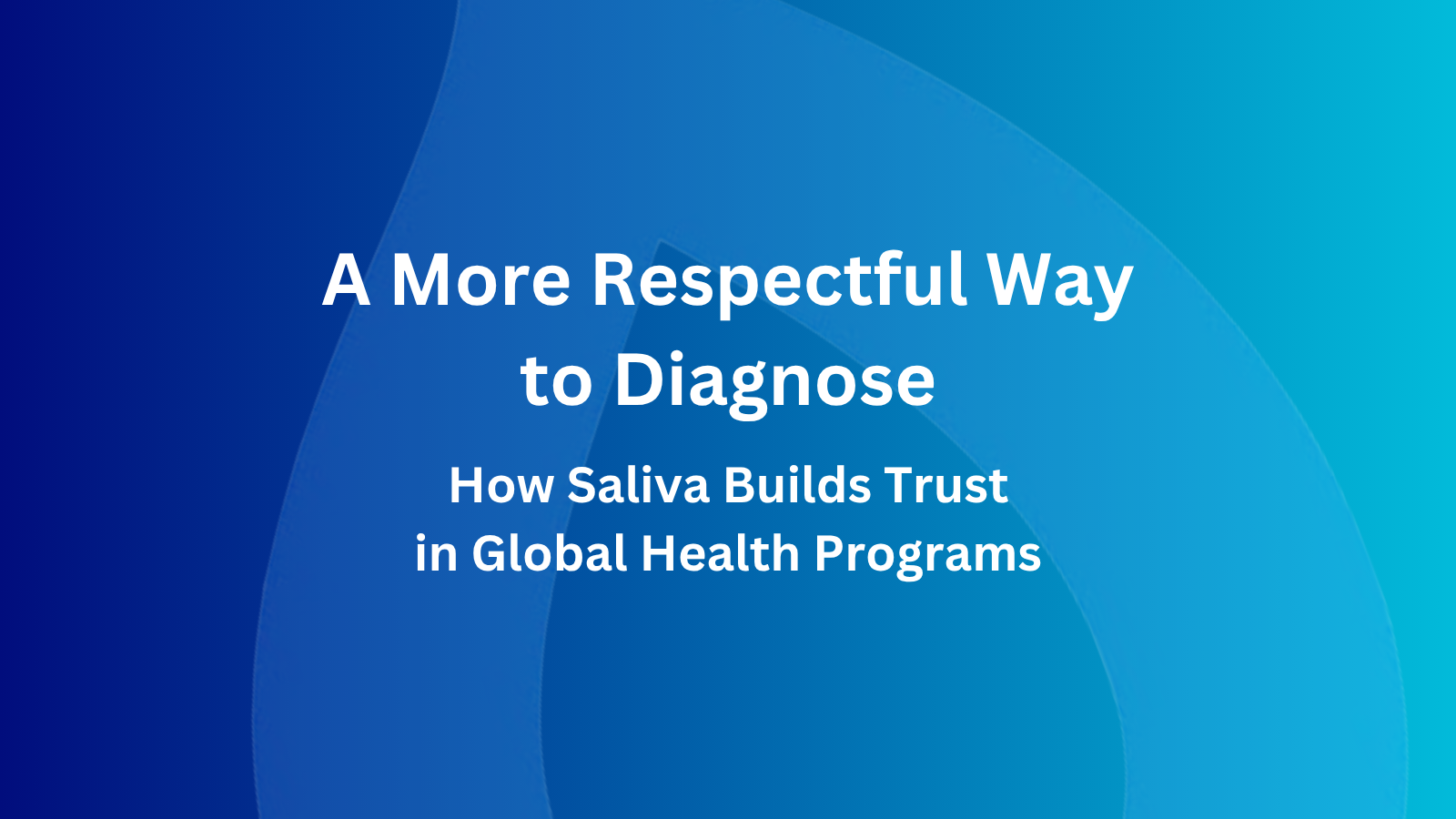How Saliva Testing Respects Cultural Norms in Global Health
In global health initiatives, success isn’t just measured by the sophistication of technology or the accuracy of results—it’s also about community acceptance and participation. Cultural beliefs, religious practices, and social norms can significantly influence how people perceive and engage with healthcare interventions.
This is especially true when it comes to diagnostic testing. Saliva-based diagnostics, with their non-invasive and discreet nature, are uniquely positioned to overcome barriers that have long hindered effective screening and disease prevention in many parts of the world.
The Cultural Challenges of Traditional Diagnostics
Blood draws, while clinically effective, can present significant obstacles in certain communities. For some, the act of drawing blood is associated with pain, fear, or even spiritual beliefs about the sanctity of blood.
In other cases, social stigma may arise from the visible marks left by needles, leading to suspicion or discrimination. These barriers can result in low participation rates in health programs, undermining efforts to control infectious diseases, monitor chronic conditions, or address malnutrition.
Women and children are often disproportionately affected by these challenges. In conservative societies, cultural norms may restrict women’s ability to access healthcare or participate in procedures perceived as invasive. Children, meanwhile, may experience heightened anxiety or trauma from blood collection, making parents hesitant to consent to testing.
Saliva Testing: A Respectful Alternative
Saliva-based diagnostics offer a solution that aligns more closely with diverse cultural and religious values. Collection is simple, painless, and can often be performed privately, either by the individual or with minimal assistance from a healthcare worker. There are no needles, no visible marks, and no bodily fluids that might carry a social or spiritual burden.
This approach has been shown to increase participation rates in health programs, particularly among groups that have historically been underserved. For example, in some rural communities in Africa and Asia, saliva collection for HIV and hepatitis screening has been met with far less resistance than blood-based methods. The ability to self-collect samples at home or in community settings further enhances privacy and autonomy, fostering trust and acceptance.
The flexibility of saliva testing is a powerful tool for bridging gaps in healthcare delivery, especially when cultural sensitivity is paramount.
Building Trust Through Community Engagement
The success of any public health initiative hinges on trust. Saliva-based diagnostics can be integrated into culturally sensitive health education campaigns, emphasizing their safety, privacy, and respect for local customs. Community health workers, who often serve as the first point of contact in remote or traditional settings, can be trained to explain the benefits and procedures of saliva collection in ways that resonate with local beliefs and practices.
In regions where blood draws are taboo or associated with negative connotations, saliva testing allows health programs to move forward without forcing individuals to compromise their values. This respectful approach not only improves participation but also strengthens the relationship between healthcare providers and the communities they serve.
Where Saliva Testing Made the Difference
In pastoralist societies, where blood is considered sacred and its removal is culturally restricted, saliva-based screening for diseases like malaria and HIV has achieved participation rates far exceeding those of traditional methods. In some pilot programs, over 90 percent of eligible individuals agreed to saliva testing, compared to less than half for blood draws.
Similarly, in maternal and child health initiatives, saliva diagnostics have enabled more comprehensive screening for conditions such as gestational diabetes and micronutrient deficiencies. Parents are more likely to consent to testing for their children when it does not involve needles or pain, leading to earlier detection and intervention.
These real-world examples underscore the importance of aligning diagnostic strategies with local values—a point emphasized in our own exploration of saliva’s role in global health.
Looking Ahead: Saliva Testing as a Bridge to Health Equity
As global health organizations strive to reach the most vulnerable populations, the cultural compatibility of saliva-based diagnostics becomes a critical asset. By respecting local norms and reducing barriers to participation, saliva testing paves the way for more inclusive, effective, and sustainable health interventions.
The journey toward health equity is about more than just innovation—it’s about empathy, understanding, and respect. Saliva-based diagnostics embody these values, offering a path forward that honors the diversity of the world’s communities while delivering life-saving care.


